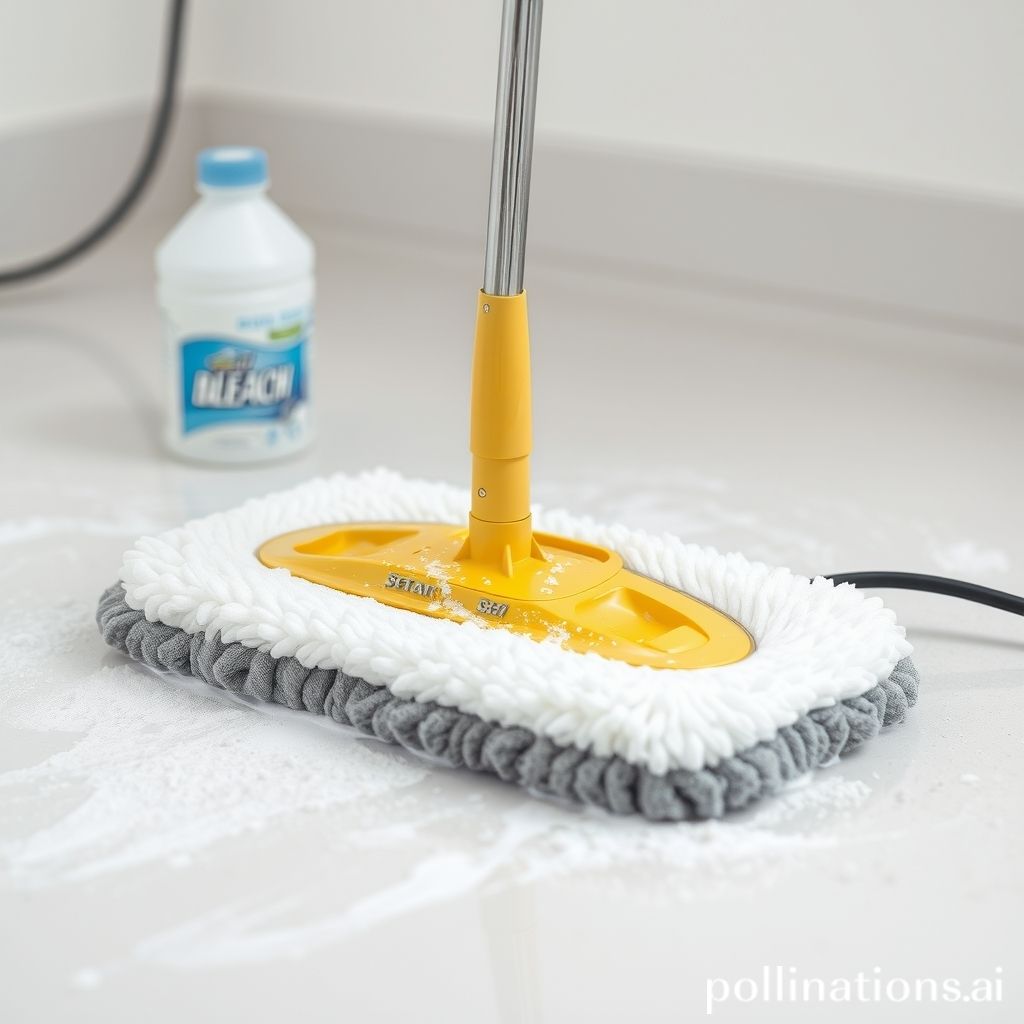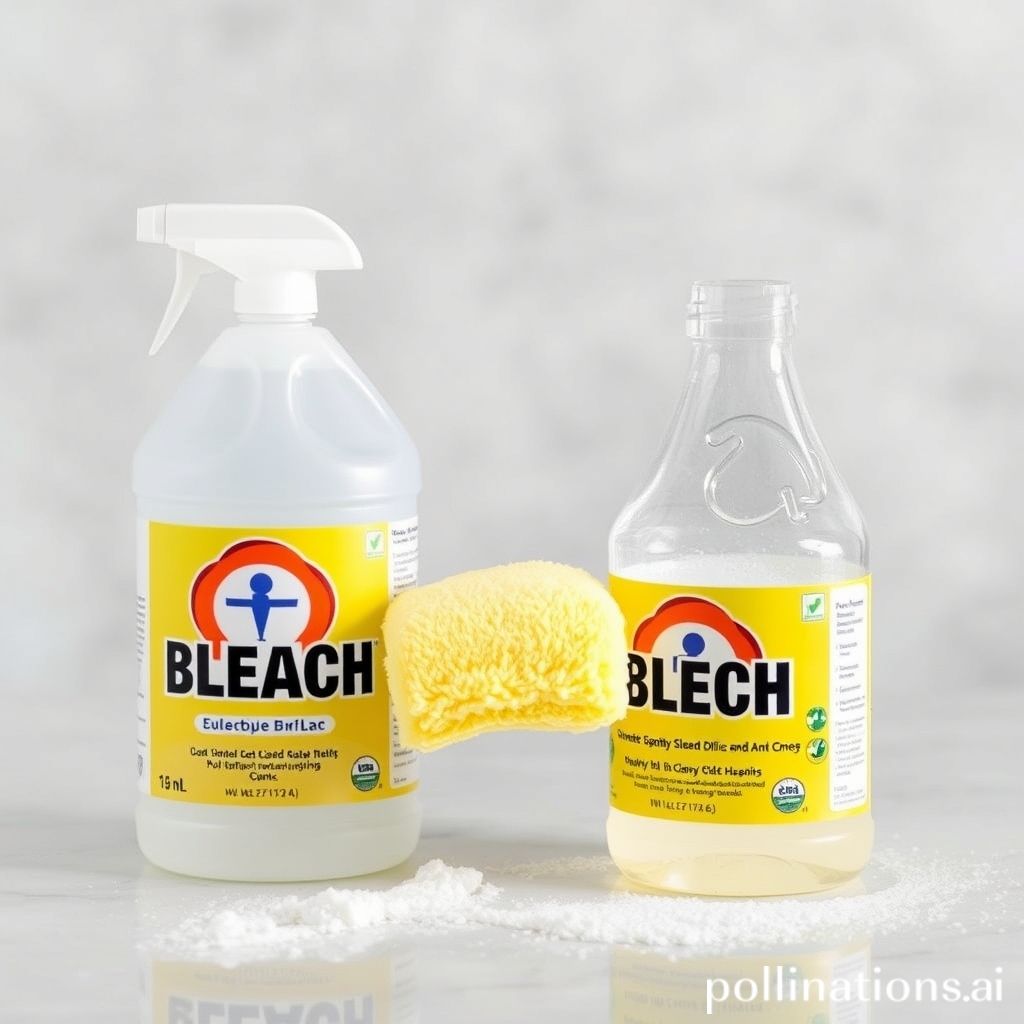Are you tired of spending hours on your hands and knees, scrubbing away at stubborn stains on your floors? Well, get ready to say goodbye to those old-fashioned mopping methods and say hello to the world of steam mops. These innovative cleaning tools have taken the market by storm, offering a more efficient and effective way to sanitize and remove dirt.
But here’s an important question: can you use bleach in a steam mop? In this comprehensive guide, we’ll explore the benefits and risks of using bleach in a steam mop, and introduce you to alternative cleaning solutions that will leave your floors sparkling. So, let’s jump right in and discover the best cleaning practices for your steam mop.
How Steam Mops Work and Their Purpose
Understanding the Functionality of Steam Mops
Steam mops utilize the power of steam to effectively sanitize and clean various surfaces in your home. They generate steam through a built-in water tank, eliminating the need for harsh chemicals. The hot steam loosens and dissolves dirt, grime, and bacteria, while the high temperature kills germs and allergens. Unlike traditional mops, steam mops use dry steam, which evaporates quickly, reducing drying times and potential water damage.
Exploring the Primary Purpose of Steam Mops
Steam mops serve multiple purposes and are versatile cleaning tools for your home. They are ideal for cleaning and sanitizing various types of floors, including hardwood, tile, laminate, and vinyl. Steam mops are particularly beneficial for individuals with allergies or respiratory conditions as they can eliminate dust mites, pet dander, and other allergens. Additionally, many steam mops come with attachments, such as brushes and nozzle tools, allowing you to clean countertops, grout, and upholstery. By using steam instead of harsh chemicals, steam mops offer an eco-friendly cleaning alternative.
In summary, steam mops provide efficient and eco-friendly cleaning solutions. They generate steam to eliminate dirt, grime, and bacteria, and their purpose extends to floor cleaning, allergen removal, versatile attachments, and eco-friendly cleaning. With steam mops, you can achieve a hygienic and healthier living environment without the use of harmful substances.
Expert Tip: Use a steam mop to effectively sanitize and clean various surfaces in your home, without the need for harsh chemicals.
Choosing the Right Surfaces and Materials for Steam Mops
Types of Surfaces and Materials Compatible with Steam Mops
Steam mops are versatile cleaning tools that can be used on a variety of surfaces and materials. Some examples include:
- Sealed Hardwood Floors: Steam mops effectively clean sealed hardwood floors without causing damage.
- Tile and Grout: Steam mops are great for removing dirt and grime from tile and grout surfaces.
- Laminate Flooring: Steam mops can safely be used on properly sealed laminate flooring.
- Vinyl Flooring: Steam mops are suitable for cleaning vinyl flooring, but always check the manufacturer’s recommendations.
- Ceramic Floors: Steam mops help remove tough stains and bacteria from ceramic floors.
- Linoleum Floors: Steam mops are a convenient option for cleaning linoleum floors.
Considerations for Choosing the Right Surfaces for Steam Mopping
When using steam mops on different surfaces, keep the following factors in mind:
- Manufacturer’s Recommendations: Always refer to the manufacturer’s guidelines to ensure compatibility.
- Avoid Unsealed or Waxed Surfaces: Do not use steam mops on unsealed or waxed surfaces to prevent damage.
- Test Before Mopping: Test a small, inconspicuous area to see if the surface can withstand the heat and moisture.
- Consider Surface Condition: Older or damaged surfaces may be more susceptible to damage from steam mops.
- Delicate Surfaces: Take special care with delicate surfaces like painted or antique wood floors.
- Follow Instructions: Always follow the instructions provided with the steam mop for optimal results and safety.
By following these guidelines and considering the compatibility of surfaces and materials, you can effectively and safely use a steam mop for your cleaning needs.
The Properties and Uses of Bleach in Household Cleaning
Explaining the Versatility of Bleach in Cleaning
Bleach is a powerful cleaning agent that offers versatility in various household cleaning tasks. Its primary component, sodium hypochlorite, possesses strong oxidizing properties. These properties make it effective against a wide range of stains, germs, and odors. To maximize the potential of bleach in your cleaning routine, it’s important to understand its versatility.
Highlighting the Different Uses of Bleach in Household Cleaning
1. Disinfecting Surfaces: Bleach is commonly used to disinfect and sanitize surfaces, especially in areas prone to bacterial growth like kitchens and bathrooms. Its antimicrobial properties help eliminate harmful bacteria, viruses, and fungi, creating a hygienic environment.
2. Removing Stains: Bleach is an excellent stain remover for fabrics and hard surfaces. It can effectively tackle tough stains such as coffee, tea, grass, or blood. However, it’s important to check fabric labels and perform spot tests to ensure compatibility and prevent discoloration.
3. Whitening and Brightening: Bleach is widely used to restore the brightness of white fabrics like bedding, towels, or clothing. Adding a small amount of bleach to the laundry can help remove yellowing and restore the original whiteness.
4. Mold and Mildew Control: Bleach is an effective solution for eliminating mold and mildew growth in damp areas like bathrooms and basements. Its disinfecting properties help kill the spores and prevent further growth when used properly.
5. Cleaning and Deodorizing: Bleach can be used to clean and deodorize a variety of surfaces, including countertops, floors, and toilets. It helps remove grime, stains, and unpleasant odors, leaving the surfaces clean and fresh.
6. Disinfecting Dishcloths and Sponges: Soaking dishcloths and sponges in a diluted bleach solution can help kill bacteria and remove odors, ensuring their hygienic use in the kitchen.
7. Outdoor Cleaning: Bleach can be used to clean outdoor surfaces like patio furniture, decks, and driveways. Diluted bleach can effectively remove dirt, mold, and mildew, restoring the appearance of outdoor areas.
By incorporating bleach into your cleaning routine, you can significantly enhance the effectiveness and efficiency of your household cleaning tasks. However, it’s crucial to follow safety guidelines, properly dilute bleach, and avoid mixing it with other cleaning products to prevent harmful chemical reactions.

Effectiveness of Bleach in Killing Germs and Removing Stains
Understanding How Bleach Kills Germs and Disinfects Surfaces
- Chemical properties of bleach that make it effective against germs: Bleach contains active ingredients like sodium hypochlorite, which have strong antimicrobial properties.
- Mechanism of action for killing germs and disinfecting surfaces: When bleach comes into contact with microorganisms, it oxidizes their cellular components, disrupting their structure and rendering them harmless.
Exploring the Stain-Removing Power of Bleach
- Bleach as a powerful stain remover: Bleach can effectively remove stains from various surfaces, including fabrics and hard surfaces.
- How bleach breaks down and removes different types of stains: Bleach acts as a bleaching agent, breaking down pigments and removing color from stains, making them less visible or eliminating them entirely.
- Limitations and considerations when using bleach for stain removal: While bleach can be effective, it is important to consider its potential to damage certain materials, such as colored fabrics or delicate surfaces. It is also essential to follow safety guidelines and use bleach in well-ventilated areas.
| Information |
|---|
| Bleach contains active ingredients like sodium hypochlorite. |
| Bleach oxidizes cellular components of microorganisms. |
| Bleach can remove stains from fabrics and hard surfaces. |
| Bleach acts as a bleaching agent, breaking down pigments. |
| Consider limitations and safety guidelines when using bleach. |
Risks and Precautions of Using Bleach in a Steam Mop
Understanding the Risks of Using Bleach in a Steam Mop
Using bleach in a steam mop may seem convenient for disinfecting floors, but it’s important to be aware of potential risks. In this section, we will discuss safety concerns associated with using bleach in steam mops and provide necessary information for informed decision-making.
Potential Risks and Precautions
While bleach can effectively kill germs and bacteria, it can also pose risks when improperly used in steam mops. Here are potential risks to consider and precautions to take before using bleach in your steam mop:
1. Damage to Surfaces:
– Check manufacturer’s guidelines for bleach compatibility.
– Protect floors and surfaces to prevent discoloration or damage.
2. Toxic Fumes:
– Mix bleach in a well-ventilated area to avoid inhaling toxic fumes.
– Do not mix bleach with other cleaning products to prevent chemical reactions.
3. Skin and Eye Irritation:
– Wear protective gloves and eyewear when handling bleach to avoid irritation.
– Minimize direct contact with bleach and rinse thoroughly if accidental exposure occurs.
4. Residue Build-up:
– Thoroughly rinse the mop after using bleach to remove any residue.
– Follow manufacturer’s cleaning instructions to prevent slippery floors.
5. Environmental Impact:
– Dispose of leftover bleach or cleaning solutions responsibly, following local regulations.
– Consider using bleach-free alternatives that are safer for the environment.
Remember, there are alternative disinfectants and cleaning solutions available that may be safer and equally effective for your steam mop. Always read and follow the manufacturer’s instructions, and prioritize safety when using cleaning products.
Conclusion
Steam mops have become increasingly popular for their effective cleaning capabilities. However, it is important to note that bleach should not be used in a steam mop. Mixing bleach with water and using it in a steam mop can cause damage and safety hazards. To ensure efficient and safe cleaning, it is advisable to use cleaning solutions that are compatible with steam mops.
There are eco-friendly alternatives to bleach, such as natural cleaning solutions, that can be used for disinfecting with a steam mop. By following proper usage techniques and maintenance tips, you can maximize the efficiency of your steam mop and achieve excellent cleaning results.
Faq about Using Bleach in a Steam Mop
FAQ 1: Can I mix bleach with water and use it in a steam mop?
No, it is not recommended. Bleach contains chemicals that may damage the steam mop or its components. Follow the manufacturer’s instructions and use the recommended cleaning solutions.
FAQ 2: Will using bleach in a steam mop damage the mop or its components?
Yes, using bleach in a steam mop can potentially damage the mop or its components. The harsh chemicals in bleach may corrode or degrade the internal parts, leading to malfunction or reduced performance. Avoid using bleach to ensure its longevity.
FAQ 3: Are there any specific steam mops that are compatible with bleach?
While some steam mops claim to be compatible with bleach, it is generally not recommended. Use the cleaning solutions recommended by the manufacturer or explore alternative disinfecting methods.
FAQ 4: What are the alternatives to bleach for disinfecting with a steam mop?
There are several alternatives to bleach for disinfecting with a steam mop. Popular options include vinegar, hydrogen peroxide, or steam mop-specific disinfectant solutions. These alternatives can effectively kill germs without the potential damage that bleach can cause.
FAQ 5: Can I use bleach on all types of surfaces with a steam mop?
No, bleach is not suitable for all types of surfaces when using a steam mop. It can discolor or damage delicate surfaces such as hardwood floors, laminate, or certain types of tiles. Check the manufacturer’s guidelines and use appropriate cleaning solutions for each specific surface to prevent any damage.

